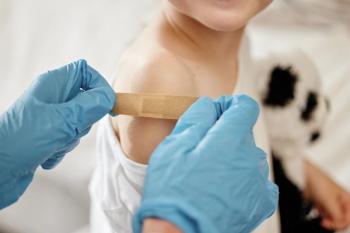
Risk of Type 2 Diabetes In Children Increases Following SARS-CoV-2 Infection
Key Takeaways
- Pediatric patients with COVID-19 have a higher risk of developing T2D compared to those with other respiratory infections.
- The risk of T2D is notably higher in children with obesity or severe COVID-19 infection.
The increase was observed across multiple subgroups, including those with overweight or obesity and hospitalized patients.
The risk of an incident diagnosis of type 2 diabetes (T2D) in children and adolescents was higher within 6 months of a COVID-19 diagnosis compared with patients diagnosed with other non-COVID-19 respiratory infections (ORIs), according to the results of a recent study.1
SARS-CoV-2, the virus that causes COVID-19, has been associated with a variety of chronic illnesses that occur in the weeks and months following diagnosis. Diabetes is no different, with previous studies
Sparse research exists on the incidence of diabetes after COVID-19 among children and adolescents. Most studies that exist feature small study populations, providing insufficient data to make any clinical determinations. However, the incidence of T2D was
In this trial, the investigators sought clarity in understanding the risk of T2D development in pediatric patients following a COVID-19 diagnosis, compared with the risk following ORIs. Data was compiled from the first 2 years of the pandemic; children were also compared based on body mass index (BMI), severity of disease, and sex.1
A total of 613,602 individuals aged 10-to-10 years without prior documentation of pre-diabetes or elevated HbA1C were analyzed, with 306,801 patients in each of the COVID-19 and ORI cohorts. Follow-up data was documented from the day of infection to 1-, 3-, and 6-months following diagnosis.1
Patients with COVID-19 were found to have a significantly elevated risk of developing T2D compared with patients with ORI at each follow-up point (RR at 1 month: 1.55 [95% CI, 1.28-1.89]; RR at 3 months: 1.48 [95% CI, 1.24-1.76]; RR at 6 months: 1.58 [95% CI, 1.35-1.85]), according to the investigators.1
Next, pediatric patients with overweight or obesity were examined. Specifically, among patients with 1 or more encounter diagnoses for a BMI indicating overweight or obesity, COVID-19 was associated with a much higher risk of developing T2D at each follow-up point compared with ORIs (RR at 1 month: 2.07 [95% CI, 1.12-3.83]; RR at 3 months: 2.00 [95% CI, 1.15-3.47]; RR at 6 months: 2.27 [95% CI, 1.38-3.75]). A similar result was garnered when the comparison was limited to patients who had an inpatient encounter within 1 month of a confirmed COVID-19 infection.1
The data shows a clear association between the risk of developing T2D among pediatric patients aged 10 to 19 and a diagnosis of COVID-19, especially 6 months following diagnosis. Critically, this increased risk was observed in the subset of hospitalized patients in the cohort, in addition to those who had BMI classified as obese or overweight. Furthermore, the data aligns with previous reports of increases in T2D in adolescents since the onset of the COVID-19 pandemic.1,3
It is important to note that the study—a retrospective, observational undertaking—cannot identify causation between the conditions. However, the investigators discussed how several possible causes of T2D could be affected by a SARS-CoV-2 infection. Metabolic stress imposed by the virus could push a disease towards development in a vulnerable child, while it also may have the ability to selectively infect human pancreatic cells, which could damage the ability of the pancreas to secrete insulin.1
“Understanding the role that SARS-CoV-2 plays in pediatric T2D incidence will add an important component to consideration of the risks and benefits of preventing SARS-CoV-2 infection in children,” the study authors concluded.1
REFERENCES
1. Miller MG, Terebuh P, Kaelber DC, et al. SARS-CoV-2 infection and new-onset type 2 diabetes among pediatric patients, 2020 to 2022. JAMA Netw Open. 2024;7(10):e2439444. doi:10.1001/jamanetworkopen.2024.39444
2. Antrim A. SARS-CoV-2 associated with higher risk of diabetes. Pharmacy Times. Published April 28, 2023. Accessed October 15, 2024. https://www.pharmacytimes.com/view/sars-cov-2-associated-with-higher-risk-of-diabetes
3. Gallagher A. Incidence of type 2 diabetes increased significantly following COVID-19 pandemic. Pharmacy Times. Published September 29, 2023. Accessed October 15, 2024. https://www.pharmacytimes.com/view/incidence-of-type-2-diabetes-increased-significantly-following-covid-19-pandemic
Newsletter
Stay informed on drug updates, treatment guidelines, and pharmacy practice trends—subscribe to Pharmacy Times for weekly clinical insights.














































































































































































































